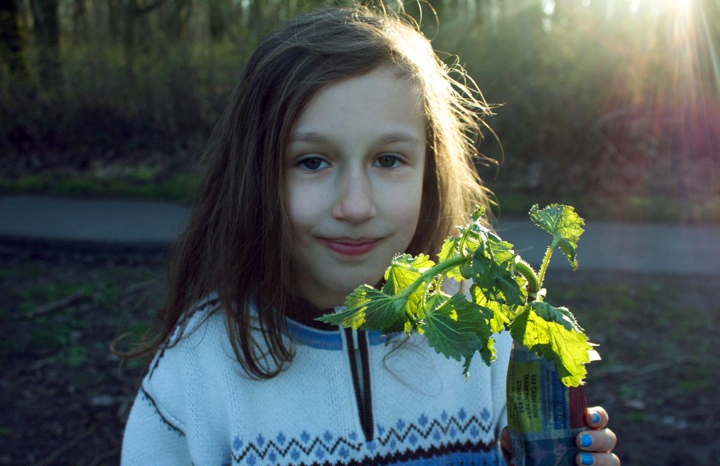Nature and green spaces enhance our memory, concentration, mood, immunity, longevity, recovery rate, psychological well-being, self-reported general health, satisfaction, social interactions, and property values.
Rewild Portland is a non-profit organization based in Portland, Oregon. Their mission comes to life in the form of educational workshops, community-building events, art shows, and ecological restoration. “Rewilding” means “to return to a more wild or self-willed state.”
This encompasses a large spectrum of nature connection; from learning about native plants to full-on living off grid in the style of earth-based hunter-gatherer-gardeners. Resilience is a culture’s ability to withstand or bounce back from large scale environmental and social changes.
Rewilding creates resilience because it is about getting the things you need to live from the land you live on in a regenerative manner, not extracted and shipped from thousands of miles away. Rewild Portland’s goal is to provide a full-spectrum model of education and implementation; from students who come to a single introductory course, to partners of a collective using regenerative design land management principles to live off the land together.
The idea of rewilding started out as a movement to conserve, restore, and reconnect natural areas, and has expanded to how we reintegrate ancient practices into our modern lives. From a flat-footed squat to full emersion in nature to structured programs like ReWild Portland, the idea of letting go of some of our domestication to reconnect with nature is compelling. From a city planning perspective, the human rewilding ideas that interest me the most are the inspiration of cities, towns and villages that are making nature more accessible to our everyday habits. And the paybacks for those efforts. When nature is integrated into urbanism, wellness surges.
Many of the places most successful at integrating nature into urbanism employ the transect to ensure streets stay compact, fronts of buildings keep to a coherent urban form, and a range of character-appropriate public space is enabled. While language and form change locally, greens, squares, and plazas are more urban in form with more composed landscapes and are smaller in size. These may offer most people a micro-restorative experience, while a full-on human rewilding or forest bathing experience may require making your way to your larger greenbelt or park, which are often 3 hectares or larger.

